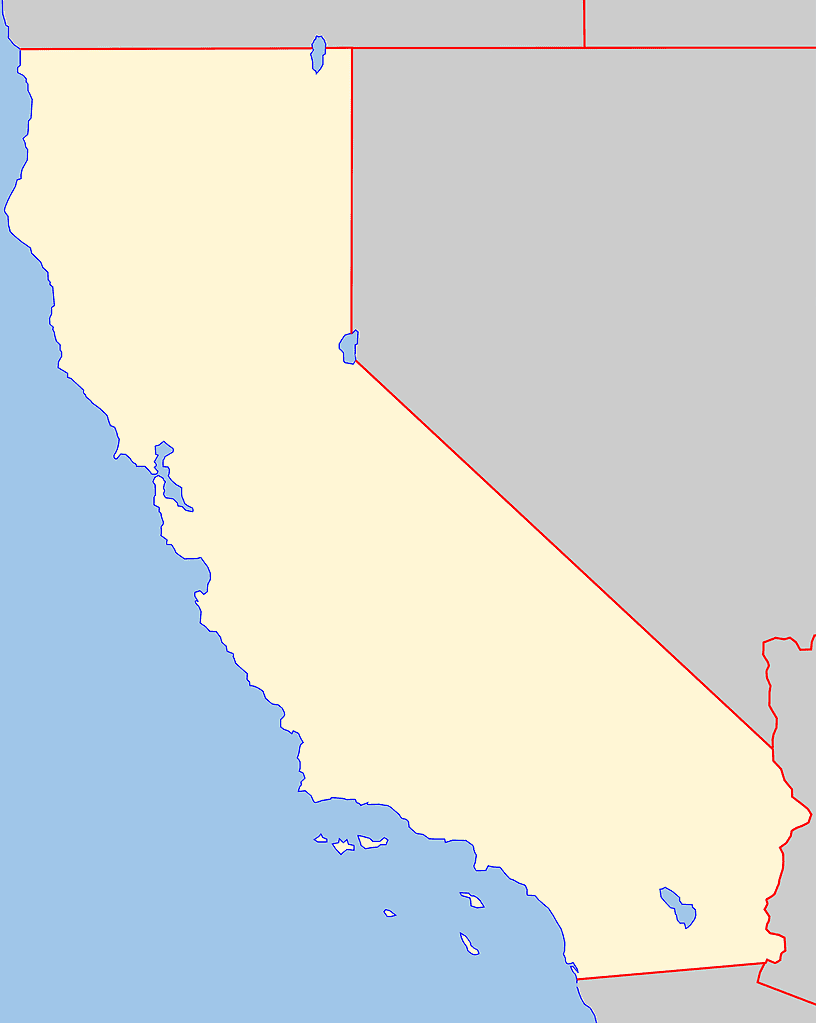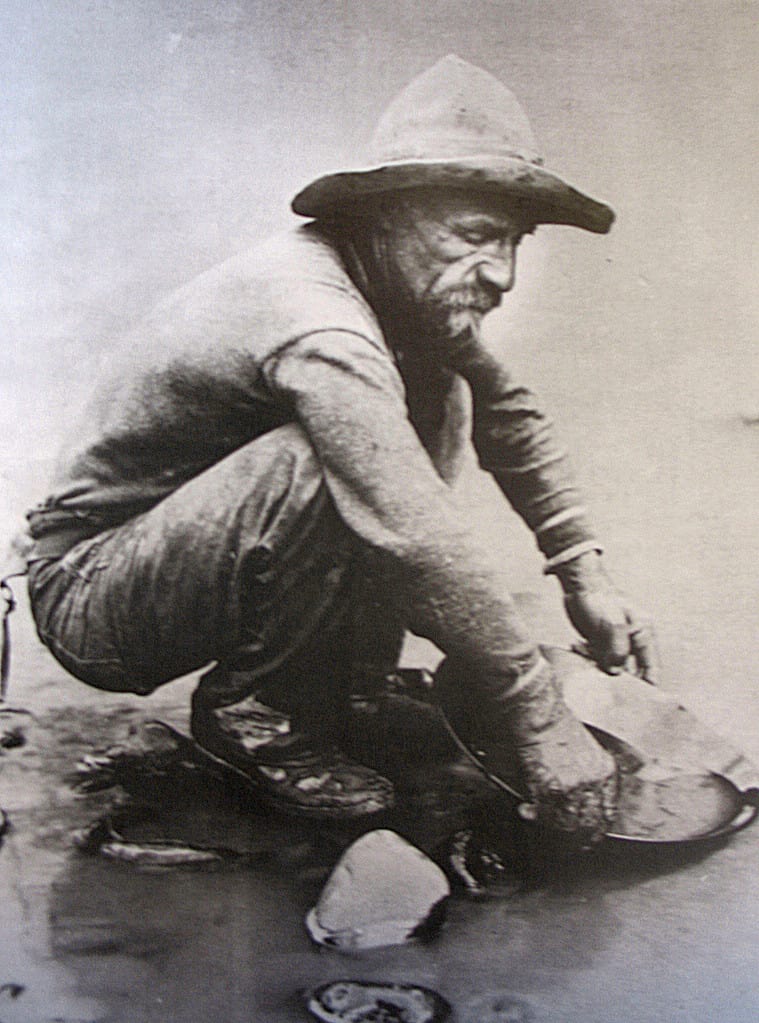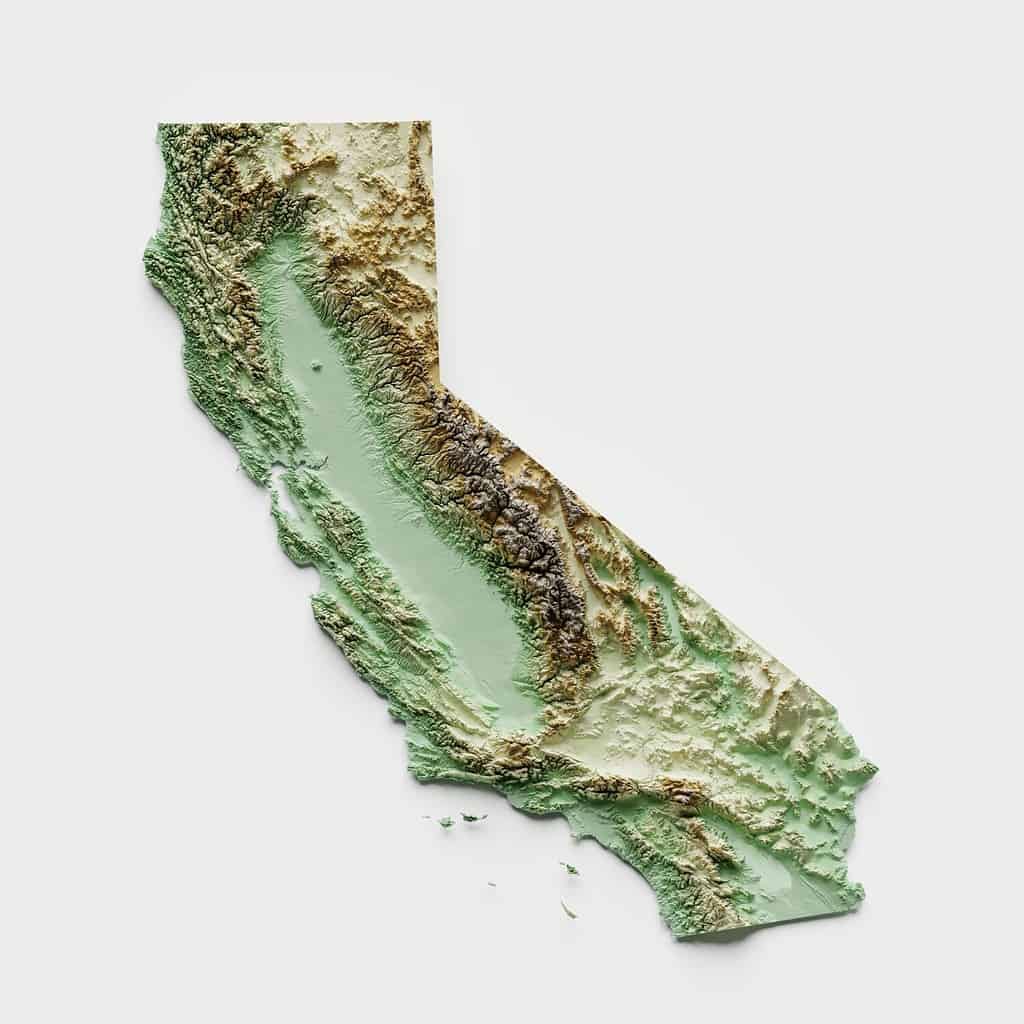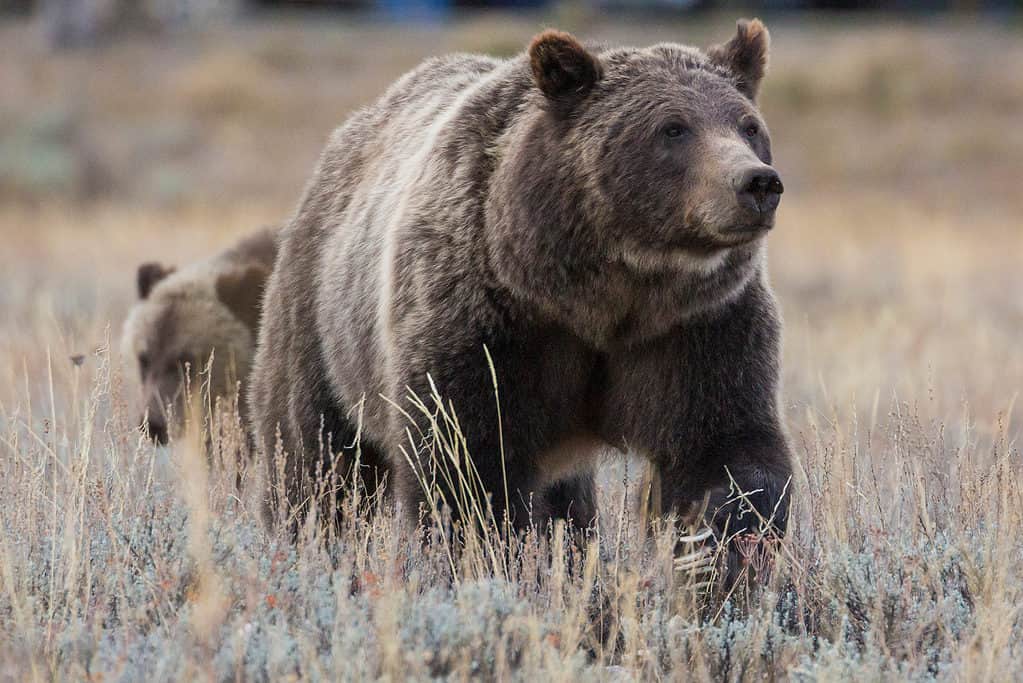California is one of the longest states in the U.S. and is hundreds of miles wide. Exactly how wide is California? Though its average width is 250 miles, California spans 360 miles from east to west at its widest point. It’s also the third-largest U.S. state behind Alaska (#1) and Texas (#2).

California is 360 miles wide from east to west between its most extreme points.
©Angr / CC BY-SA 3.0 – License
Overall Size of California
According to the Western Regional Climate Center (WRCC), California spans over 800 miles from north to south and 360 miles east to west between its extreme points. It also consists of 158,693 total square miles.
How wide is California at its extreme points? This is a question nobody can answer without knowing what those points are. So here’s a list of the extreme points to the east, west, north, and south of California:
- The Easternmost point of California is in San Bernardino County, roughly 3-miles south of Parker Dam.
- The Westernmost point of California is at Cape Mendocino in Humbolt County.
- The Northernmost point of California is where it meets with Oregon at its northern border on the 42nd parallel (a circle of latitude).
- The Southernmost point of California is in Imperial Beach, at Border Field State Park.
If you love California stats, keep reading for more! We’ll look at when California became a state, the details of its geography, and the wildlife that calls the Golden State home.

The California Gold Rush helped inspire California’s bid for statehood in the late 1840s.
©Photo: L. C. McClure / Public domain – License
California’s Statehood and Rich History
September 9, 1850, marks the admission day when California became the 31st U.S. state. The Gold Rush that began in this territory in 1848 led to a massive jump in population that helped inspire the debate for statehood in 1849.
San Jose was the first state capital of California, established in 1849. Later, after unsuccessfully developing a permanent center for government in San Jose, Sacramento became California’s state capital in 1855.
California’s rich history dates back to its Indigenous Peoples, well before the territory became a state. Indigenous Peoples inhabited this area of land for over 10,000 years before the first European settlement in 1769. That settlement launched California’s Spanish colonization, followed by the Mexican Republic years between 1823 and 1848.

California is the third-largest U.S. state and spans 158,693 square miles.
©EmLion/Shutterstock.com
California’s Diverse Geography
How wide is California if you measure every inch of its terrain? It’s probably much wider than you think because the geography of California is as diverse as its people. The state has arid deserts and lush river valleys. It offers soft, sandy beaches and jagged lava beds. In addition, California’s diverse geography includes stunning bodies of water and majestic mountain ranges.
There are 11 distinct geological regions in California called geomorphic provinces.
- Klamath Mountains
- Cascade Range
- Modoc Plateau
- Basin and Range
- Coast Ranges
- Central or Great Valley
- Sierra Nevada
- Transverse Ranges
- Mojave Desert
- Peninsular Ranges
- Colorado Desert
Each geomorphic province has unique terrain and diverse wildlife. And many of these geographical traits extend into California’s bordering states.
The states that border California are:
- Nevada: located east and northeast of California
- Arizona: located southeast of California
- Oregon: located north of California
How wide is California compared to its border states? California is nearly the same width as Arizona (335 miles wide) and Nevada (322 miles wide). But it’s nowhere near as wide as Texas (773 miles wide).

The
grizzly bear
is California’s state animal, even though California grizzlies have been extinct since the 1920s.
©BlueBarronPhoto/Shutterstock.com
Wildlife in California
California’s wildlife is full of fascinating species! In addition to its over 6,000 types of native plants, California’s diverse geography is also home to thousands of wild animals.
Native Plants: The California sagebrush, coast redwood tree, and common buckwheat are a few of the state’s common plants. Additionally, plants like purple needle grass, lemonade berry, and the coast live oak tree are highly beneficial for California’s ecosystem.
Mountain Animals: Bighorn sheep, black bears, wolverines, and cougars are just a handful of the many animals roaming California’s mountainous regions.
Birds of Prey: The state’s forests are home to many raptors, including the golden eagle and the endangered California condor.
California Lizards: Among its many reptiles, over 60 different types of lizards live in California. Common lizards in the state include the western fence lizard and the common side-blotched lizard.
California Snakes: From the common gopher snake to the Mojave rattlesnake, California is home to over 40 different types of snakes.
Marine Life: Sharks, sea otters, and humpback whales all live in the coastal waters of California. Some of the most common shark species in this area include whale sharks, tiger sharks, and basking sharks.
California State Plants and Animals
If you’ve wondered about the official state plants and animals for California, look no further! Here’s a list of the official state wildlife:
- State Flower: California poppy (Eschscholzia californica)
- State Grass: Purple needle grass (Nassella pulchra)
- State Tree: California redwood, which includes the coast redwood tree (Sequoia sempervirens) and the giant sequoia (Sequoiadendron giganteum)
- State Bird: Valley quail (Lophortyx californica)
- State Animal: California grizzly bear (Ursus californicus)
- State Insect: Dogface Zerene butterfly (Zerene eurydice)
- State Amphibian: California red-legged frog (Rana draytonii)
- State Reptile: Desert tortoise (Gopherus agassizi)
- State Fish: Golden trout (Salmo agua-bonita)
- State Lichen: Lace lichen (Ramalina menziesii)
- State Marine Fish: Garibaldi damselfish (Hypsypops rubicundus)
- State Marine Mammal: California gray whale (Eschrichtius robustus)
- State Marine Reptile: Pacific leatherback sea turtle (Dermochelys coriacea)

The easternmost point of California is in San Bernadino County.
©Adrian Michael, CC BY 3.0, via Wikimedia Commons – License
Final Thoughts
California’s total distance from east to west is just one of the state’s many fascinating statistics. It spans 360 miles at its widest point and is full of incredible geography and wildlife between its boundaries. Additionally, it’s the 31st state in the U.S. with a rich history that began thousands of years ago with its diverse Indigenous Peoples.
California’s allure, then and now, is only partly due to its magnificent size. But there’s no denying California’s geographical significance as the third-largest state in the country.
The photo featured at the top of this post is © gguy44/iStock via Getty Images
Thank you for reading! Have some feedback for us? Contact the AZ Animals editorial team.






